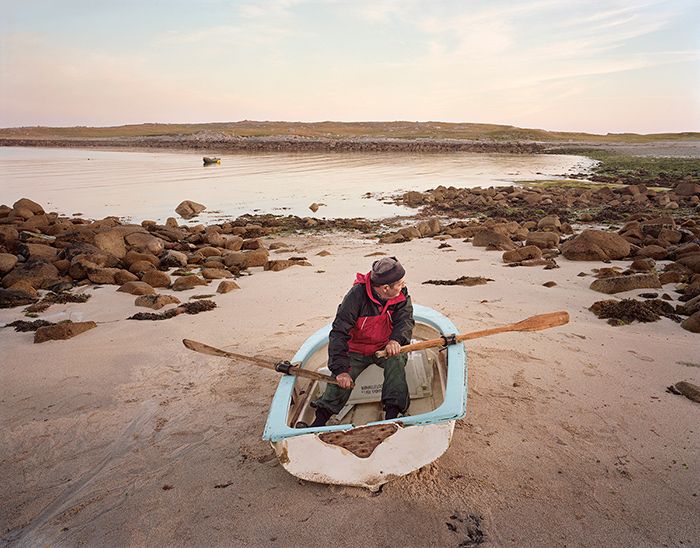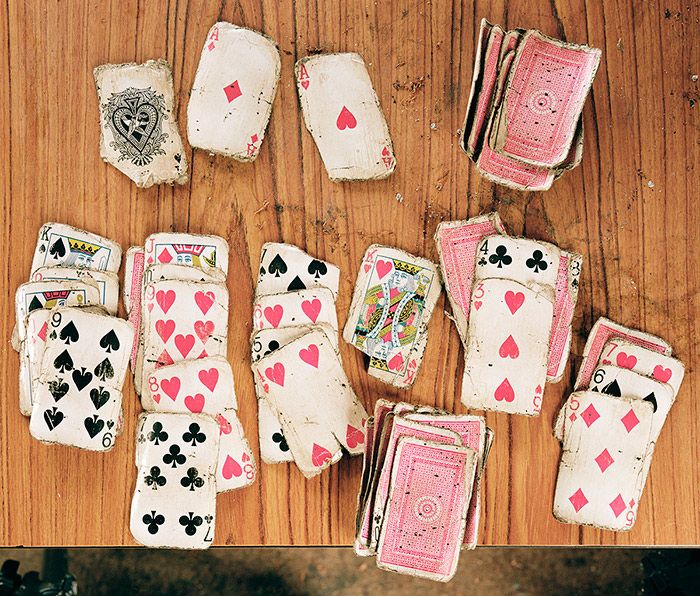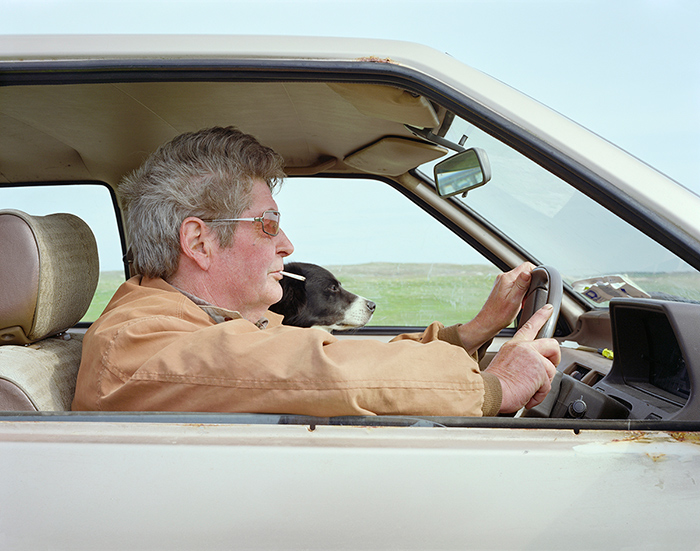blog
Interview with photographer Kevin Griffin
F-Stop Magazine: How did you first become involved in photography and what led to you working in this medium as an artist?
Kevin Griffin: Photography has been in my family for four generations. I remember as a child trawling through my grandfathers many contact sheets and prints. He was a reconnaissance photographer in the Royal Air Force throughout the Second World War, these images have remained with me to this day. I didn’t start taking pictures until my late teens, it was my brother who showed me how to use an SLR camera. I soon started shooting large format pictures and working for the Sunday Times Magazine in London. They encouraged me to use 4″x 5″ film on assignments, this led to advertising commissions which has always helped finance personal projects.
F-Sop: The “Documentary” issue of F-Stop includes your project Omey Island ‘Last Man Standing,’ can you tell us about this project? What led to you creating this project?
KG: There are many islands off the coast of Connemara where I live, some abandoned some with thriving populations and some like Omey with only one or a few people left. I was driving out of town one day when I picked up Pascal and offered him a lift back out to Claddaghduff, the nearest mainland town to Omey Island. Though our journey was brief, we managed to fit a lot into our conversation. By the time we’d reached Claddaghduff, we had discovered a shared interest in film and had touched briefly on Pascal’s past. He
casually mentioned that he had spent many years travelling the world while working as a stuntman in film, TV and live shows. My interest was sparked and the following day we met again, this time talking further about his career, about the island itself, and fishing. It was also on the second day that we decided to collaborate on a photo project, not knowing where it might lead.
F-Stop: I am fascinated by the idea of one person living on an island… do you
know what happened to the rest of the population, why people left?
KG: In Ireland the “Great Famine” between 1845 and 1852 produced mass starvation, disease and emigration. In the census of 1840 Omey Island was home to 400 people, this halved within ten years. By the beginning of the 20th century there was just over one hundred inhabitants. Ever since, the population has slowly dwindled due to the re-location of families to the mainland or the promise of a better life in a far away land. The island school closed in 1973 and by 1988 there were only three households left. Today Pascal is the last person living full time on Omey.
F-Stop: Can you discuss your process for making these images or your creative process more generally?
KG: I use all types of cameras incorporating large format through to digital. For the Omey project I used 4×5 colour negative, this helped the collaboration process, it can be quite slow and awkward at times but we communicated more because of this. The photographs were shot over a five year time period, 2008-2013, I have therefore got to know Pascal very well, in fact I don’t photograph him anymore but I still go to the island once a week to visit.
F-Stop: What do you hope people see or feel or perhaps learn when they look at these photographs?
KG: I hope people feel a certain empathy towards Pascal and that although it may feel quite a melancholic series of pictures he is very happy to have an island to himself. Quoting Pascal, “I wouldn’t swap the life I have now, not many people have an island to themselves.”
F-Stop: Do you have a favorite image in this series? If so, which one and why is it the image that speaks to you most?
KG: I like Pascal and Rex, it shows Pascal driving his old Nissan car with Rex in the passenger seat, he looks like a film star in this picture. It is was one of those images when everything goes right, Pascal’s jacket , his glasses, the hazy sunlight and the dogs head position. It is the image that defines Pascal, it is Pascal’s favourite picture.
F-Stop: What is the intended “end” or “purpose” for the project? (i.e, book, multi media piece, etc)
KG: Yes the book was released September 2013 and has been received very positively.
F-Stop: What are you working on now?
KG: I am about to do some advertising work before embarking on another long term project of Connemara the area where I live. I have also started shooting and directing TV commercials, I’d like to do more, I think this is the future for a stills photographer, commercially, being able to shoot the moving image also.
F-Stop: What photographers or other artists inspire you?
KG: Don McCullin, Raymond Moore, John Davies are all great photographers.
F-Stop: What is the best career advice you have ever received?
KG: from Don McCullin, “Photography is a practise, you never stop learning”
For more of Kevin Griffin’s work: www.kevingriffinphoto.com
Location: Online Type: Featured Photographer, Interview
One response to “Interview with photographer Kevin Griffin”
Leave a Reply
Events by Location
Post Categories
Tags
- Abstract
- Alternative process
- Architecture
- Artist Talk
- artistic residency
- Biennial
- Black and White
- Book Fair
- Car culture
- Charity
- Childhood
- Children
- Cities
- Collaboration
- Community
- Cyanotype
- Documentary
- Environment
- Event
- Exhibition
- Faith
- Family
- Fashion
- Festival
- Film Review
- Food
- Friendship
- FStop20th
- Gender
- Gun Culture
- Habitat
- Hom
- home
- journal
- Landscapes
- Lecture
- Love
- Masculinity
- Mental Health
- Migration
- Museums
- Music
- Nature
- Night
- nuclear
- p
- photographic residency
- Photomontage
- Plants
- Podcast
- Portraits
- Prairies
- Religion
- River
- Still Life
- Street Photography
- Tourism
- UFO
- Water
- Zine






[…] The series that Griffin produced on this island is both melancholic and uplifting, an exploration of a relationship between photographer and subject, his large format pictures capturing the wonderful light – that is so distinctive in this part of the world – and the simplicity of one man’s life alone, lost in his thoughts of a past that had him traversing the world as a film stuntman. It’s an extraordinary project that is both a meditation on the everyday and a testament to the richness of life and the stories one picks up along the way. Here’s what Griffin has to say about the project in an interview with F-Stop Magazine: […]